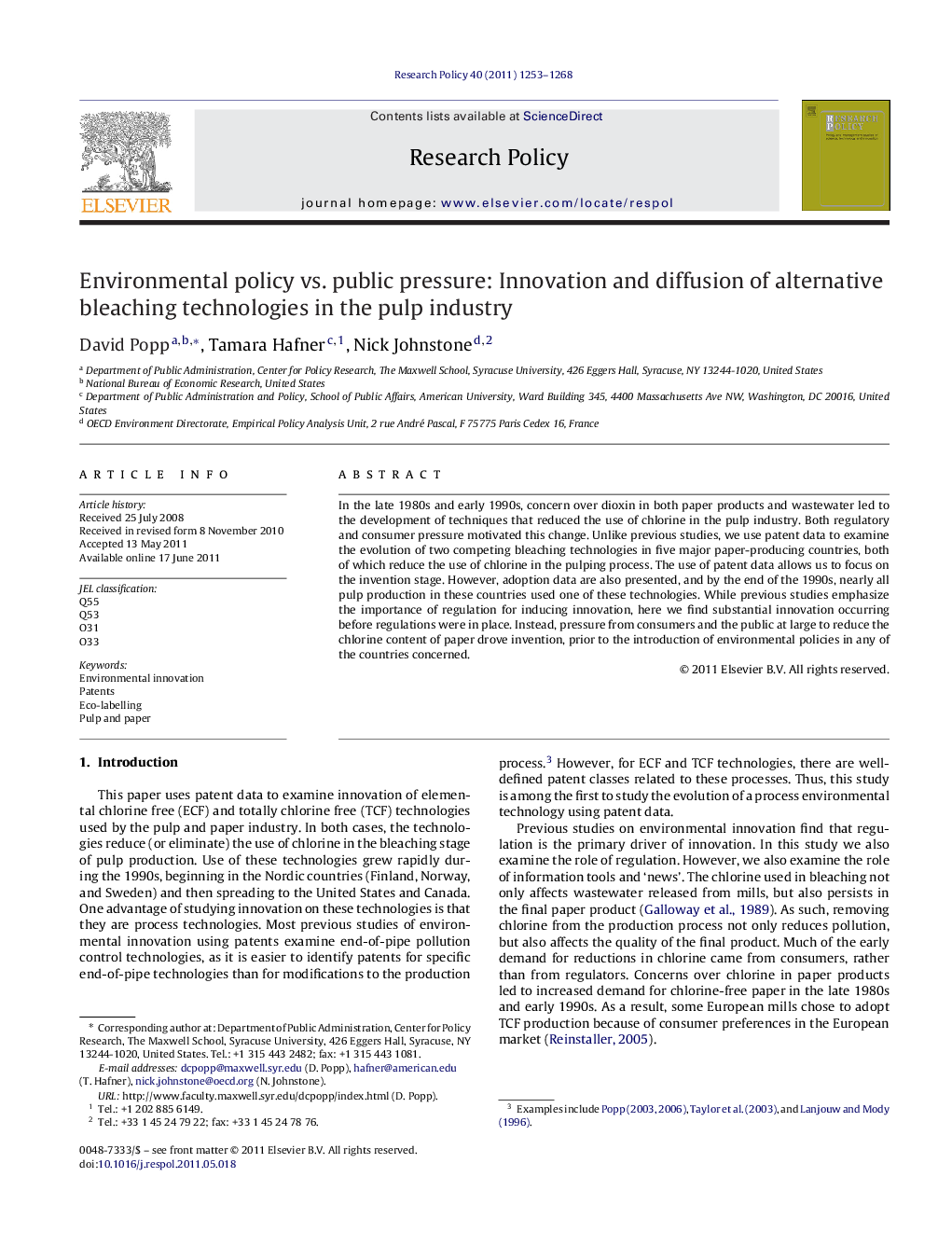| Article ID | Journal | Published Year | Pages | File Type |
|---|---|---|---|---|
| 984067 | Research Policy | 2011 | 16 Pages |
In the late 1980s and early 1990s, concern over dioxin in both paper products and wastewater led to the development of techniques that reduced the use of chlorine in the pulp industry. Both regulatory and consumer pressure motivated this change. Unlike previous studies, we use patent data to examine the evolution of two competing bleaching technologies in five major paper-producing countries, both of which reduce the use of chlorine in the pulping process. The use of patent data allows us to focus on the invention stage. However, adoption data are also presented, and by the end of the 1990s, nearly all pulp production in these countries used one of these technologies. While previous studies emphasize the importance of regulation for inducing innovation, here we find substantial innovation occurring before regulations were in place. Instead, pressure from consumers and the public at large to reduce the chlorine content of paper drove invention, prior to the introduction of environmental policies in any of the countries concerned.
► We study patents for pulp & paper bleaching technologies that reduce chlorine use. ► Previous studies emphasize the importance of regulation. ► We find substantial innovation occurring before regulations were in place. ► Public pressure to reduce the chlorine content of paper drove invention. ► Regulation followed the initial wave of innovation.
